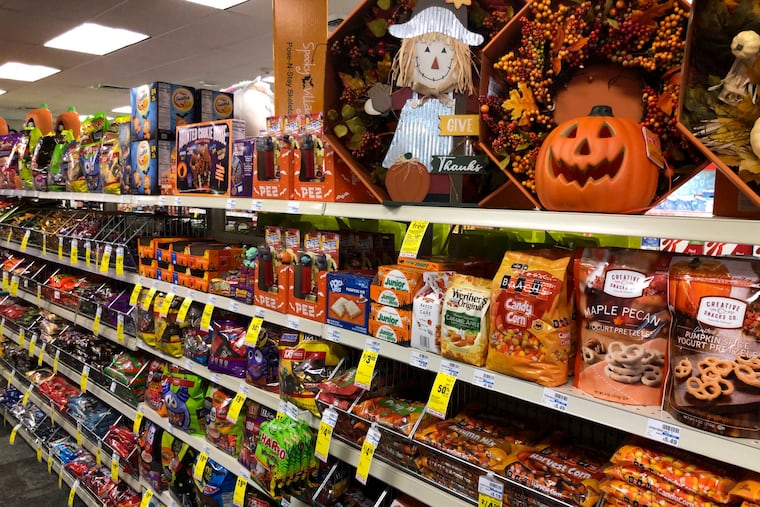Chill out, parents. Your kids’ Halloween candy is almost certainly safe. | Opinion
A University of Delaware researcher has been studying the rumors of tainted Halloween candy for years. He's never found a single instance of it actually happening.

You’ve probably been hearing it for years, maybe even for as long as you can remember: The idea that children who are trick-or-treating on Halloween face the danger that the candy they’re collecting has been subject to tampering, meant to do them grievous bodily harm.
Sometimes it comes in the form of a warning, and other times as a news report that such a thing actually happened. The method of harm differs as well: Sometimes it’s poison, other times it’s razor blades, pins, or other sharp objects. More recently it’s been marijuana edibles, ecstasy, or other drugs, often packaged to resemble popular candy items.
But for all of the fearmongering, the fact remains that there are zero confirmed cases anywhere in the country of a child being killed or injured as a result of Halloween candy that was tampered with and handed out to trick-or-treaters.
» READ MORE: Happy Hallowe’en! No, that apostrophe isn’t a typo. Here’s why. | The Grammarian
Many cases have turned out to be hoaxes, including one you may remember from Kennett Square on Halloween in 2015. In that case, four different children reported receiving Twix bars with needles in them, even posting pictures to social media and drawing major media attention. A few days later, the kids recanted their stories.
Joel Best, a professor at the University of Delaware’s department of sociology and criminal justice, has been studying myths of tainted Halloween candy and its other permutations — he calls it “Halloween Sadism” — for nearly 40 years.
Best, beginning in 1983, scoured newspapers around the country for stories about Halloween candy tampering in the first few days of November, eventually going through archives dating back to the 1950s. Best started by scouring newspapers, but has updated his research as other technologies have become available.
Best would occasionally find news stories about pins, needles, or poison, but one thing stood out: “None of them involved a kid who got killed or seriously injured by a contaminated treat picked up in the course of trick-or-treating.”
There was one horrible story from Texas in 1974 in which a father poisoned his own son to collect on a life insurance policy, and falsely blamed it on Halloween candy. Over the years, there were four other deaths that were associated in the media with Halloween candy, but all eventually turned out to be caused by other factors.
“You realize that if kids were dying, then there would be reporting, and the absence of reporting was the evidence that there probably wasn’t much going on,” Best said. And while he acknowledged that he can’t prove a negative, Best noted that “if these guys are doing this, they’re terrible at it.”
Yet despite all of the debunking, the warnings have continued, just about every Halloween.
Back in late September, a TV news reporter with a Philadelphia station took to Twitter to pass along a warning from local police that “as Halloween gets closer, [the Bensalem Police Department] are warning parents to LOOK at your child’s candy before they eat it. They confiscated these snacks that look a lot like the real thing. All are laced with THC.” The tweet also included photos of edibles recently confiscated by that department.
The tweet was mocked quite a bit, because the confiscated edibles, shared more than a month before Oct. 31, had nothing to do with Halloween, and they didn’t actually look much like the real thing. One of them was even decorated with a large marijuana leaf and clear warning text that stated “keep out of reach of children and pets.”
And while parents who partake in marijuana edibles should certainly do all they can to keep them away from their kids’ candy stockpile, it’s unlikely that anyone is going to give away expensive drugs for free to their neighbors.
Halloween is one of the more dangerous nights of the year, for reasons that have nothing at all to do with candy. As Best said, “we take tens of millions of kids and we send them out into the dark,” which leads to frequent incidents of kids being hit by cars, tripping over costumes, and other Halloween-specific injuries.
But of all the legitimate things to worry about this Halloween, from costume injuries, to continuing COVID-19 concerns, to the prospect of your kids eating an unhealthy amount of candy bars for the entire month of November, tainted Halloween candy should go way down at the bottom of the list.
“I think this is the greatest thing in the history of the world to be afraid of,” Best said. “That there’s somebody down your block that is so crazy, they will poison little children at random — but they’re so tightly wrapped that they’ll only do it one night a year.”
Stephen Silver is a journalist and film critic who lives in Delaware County.